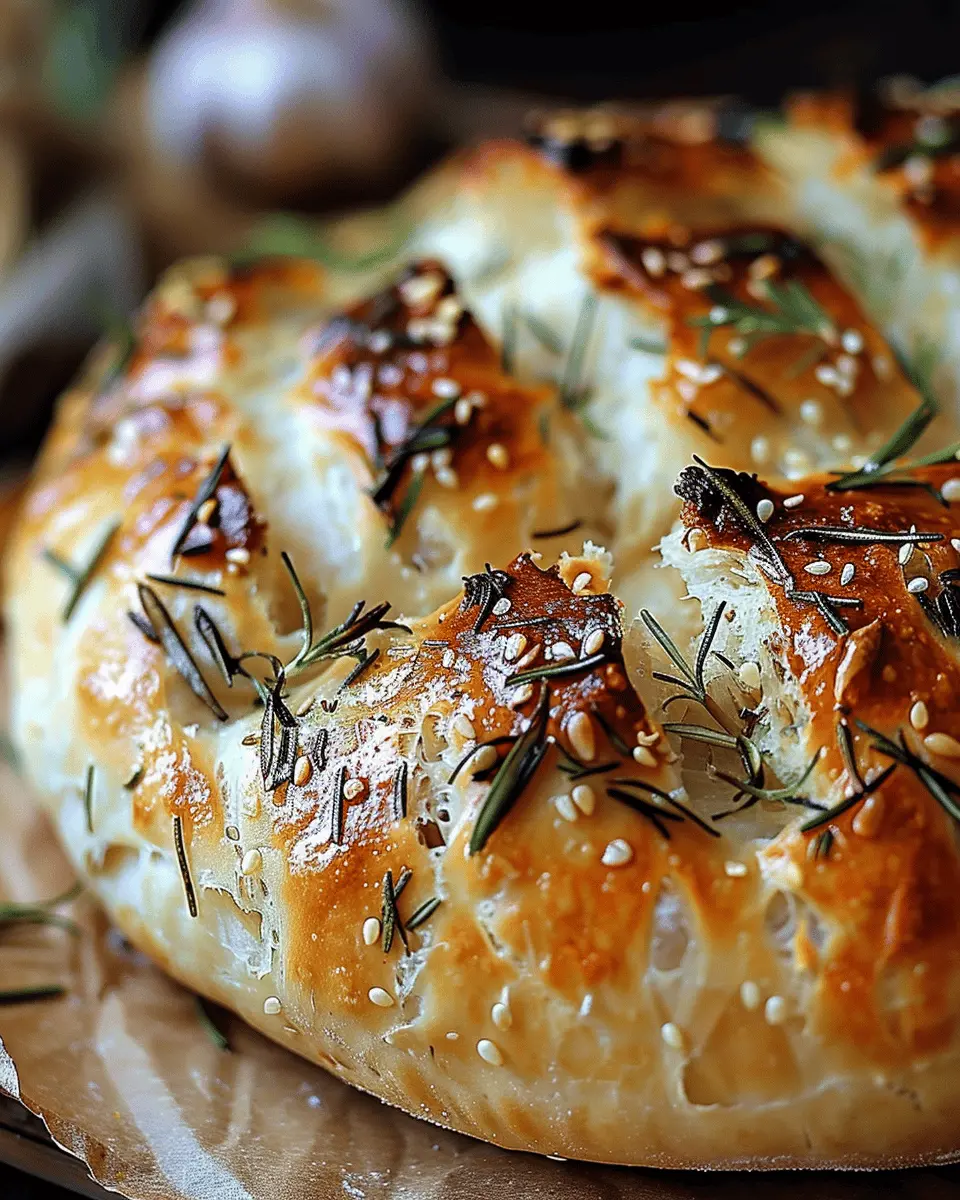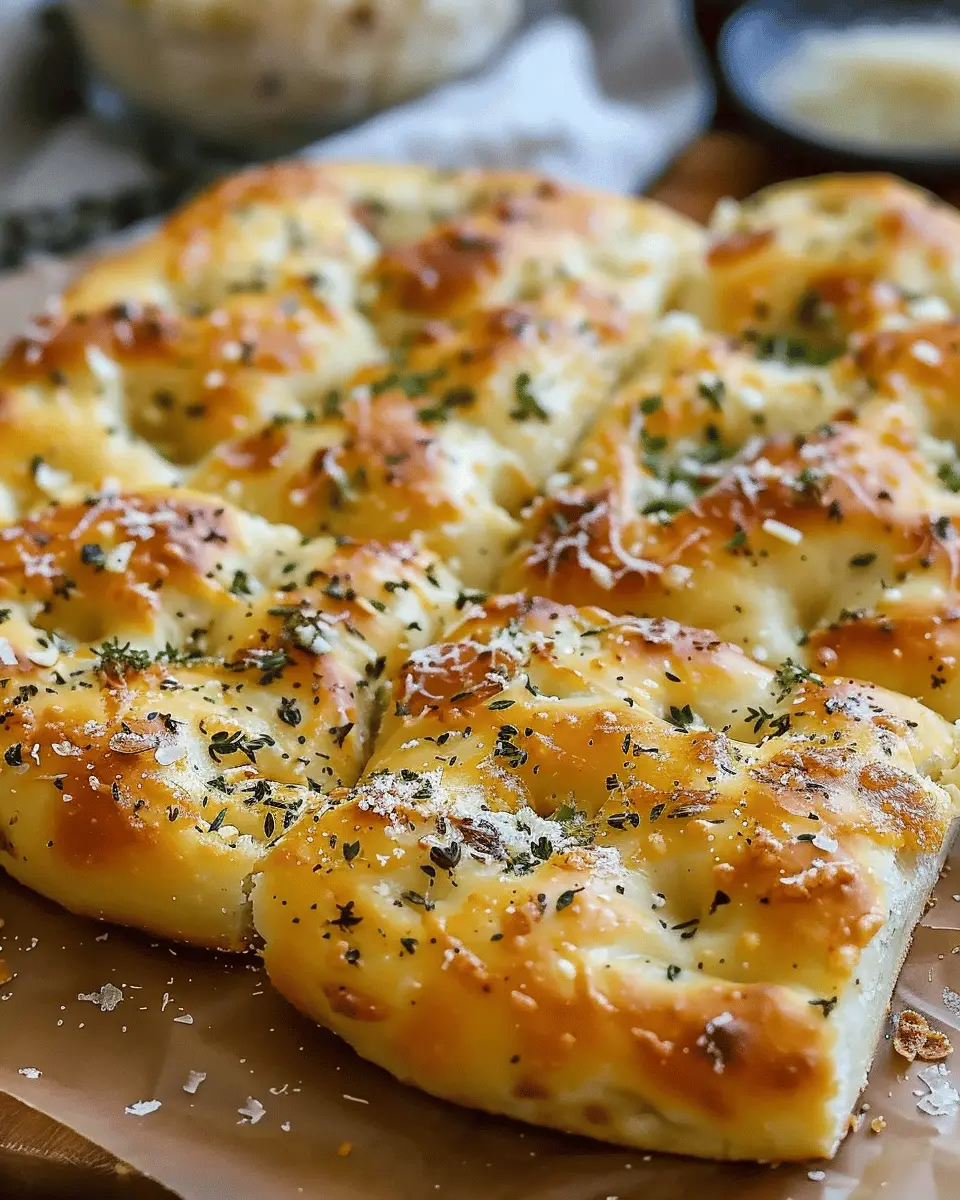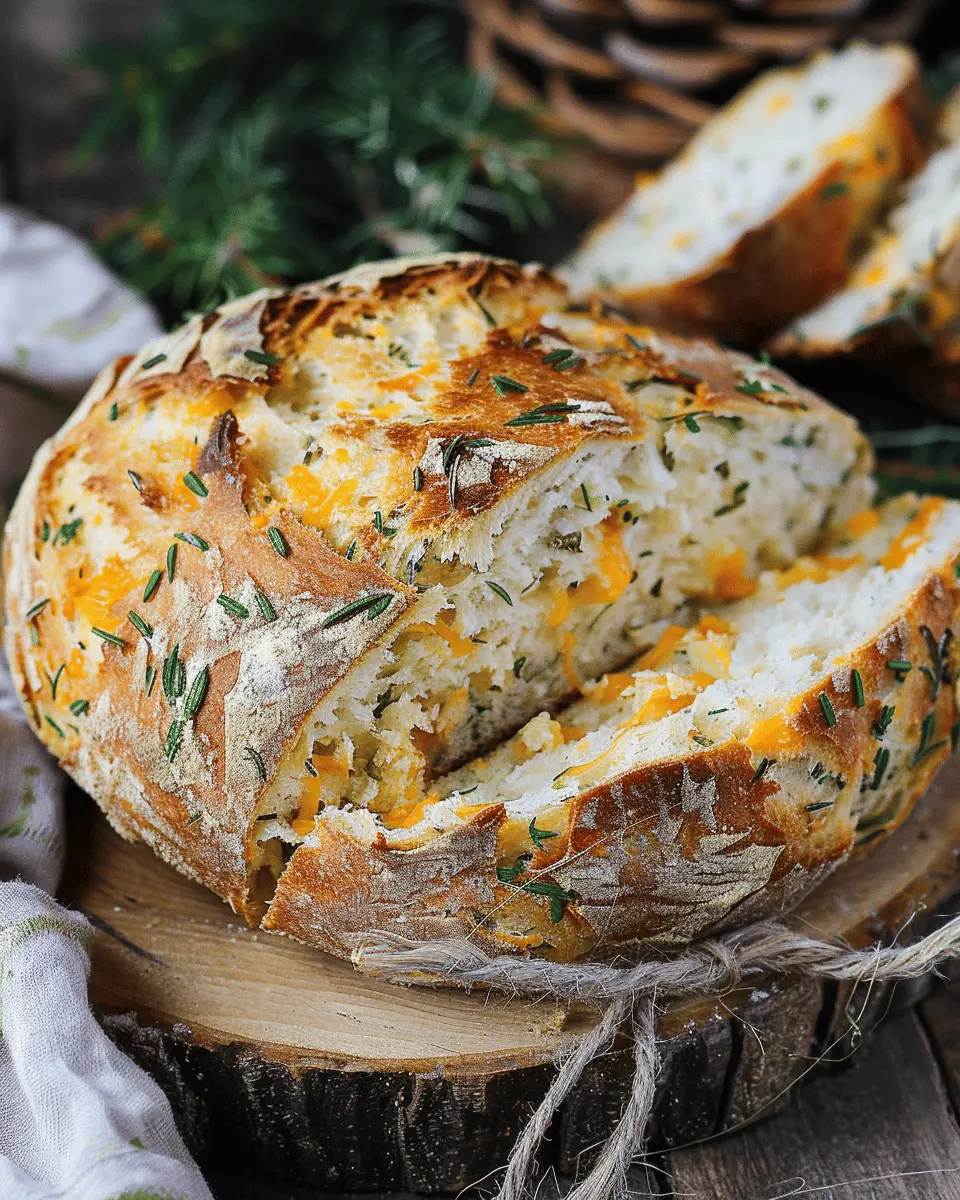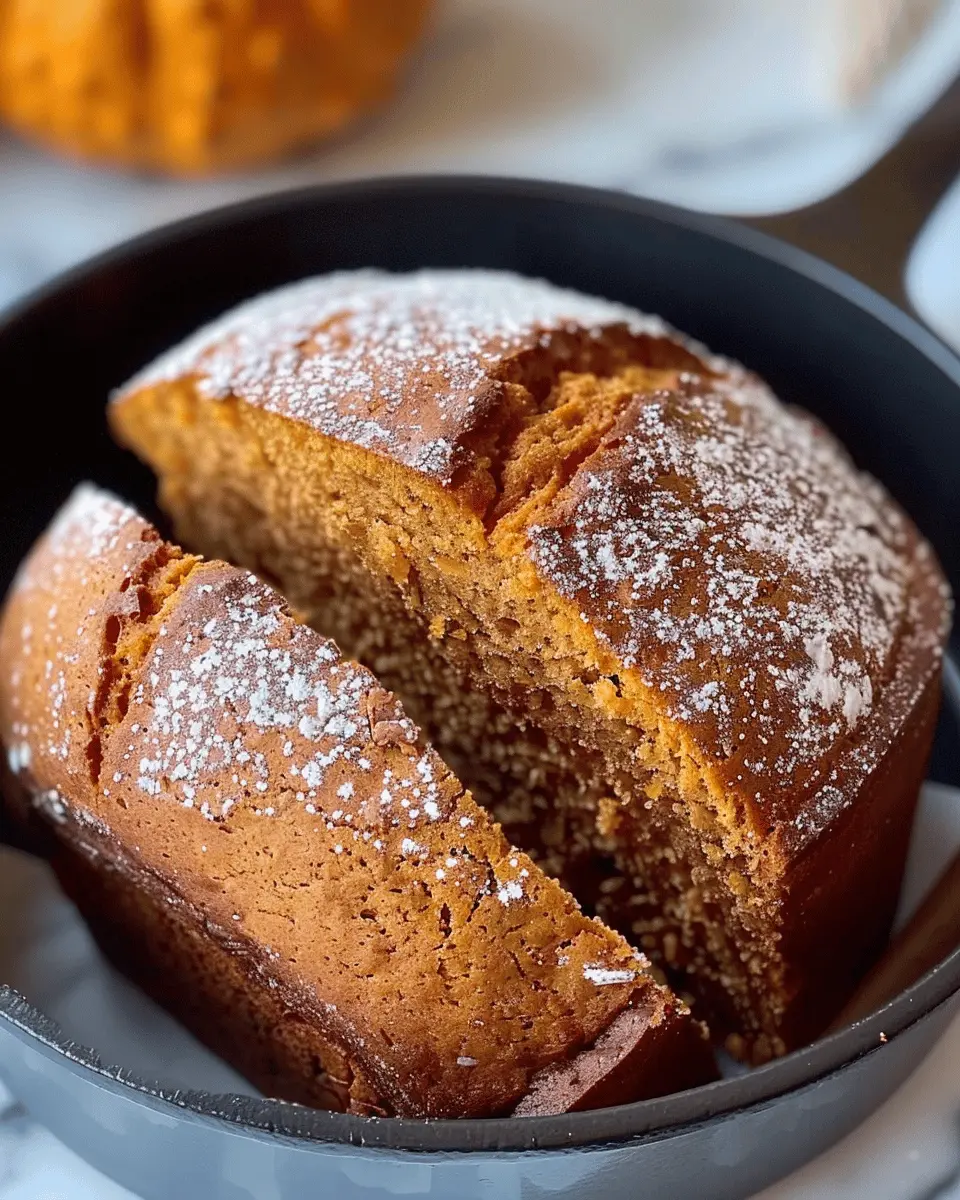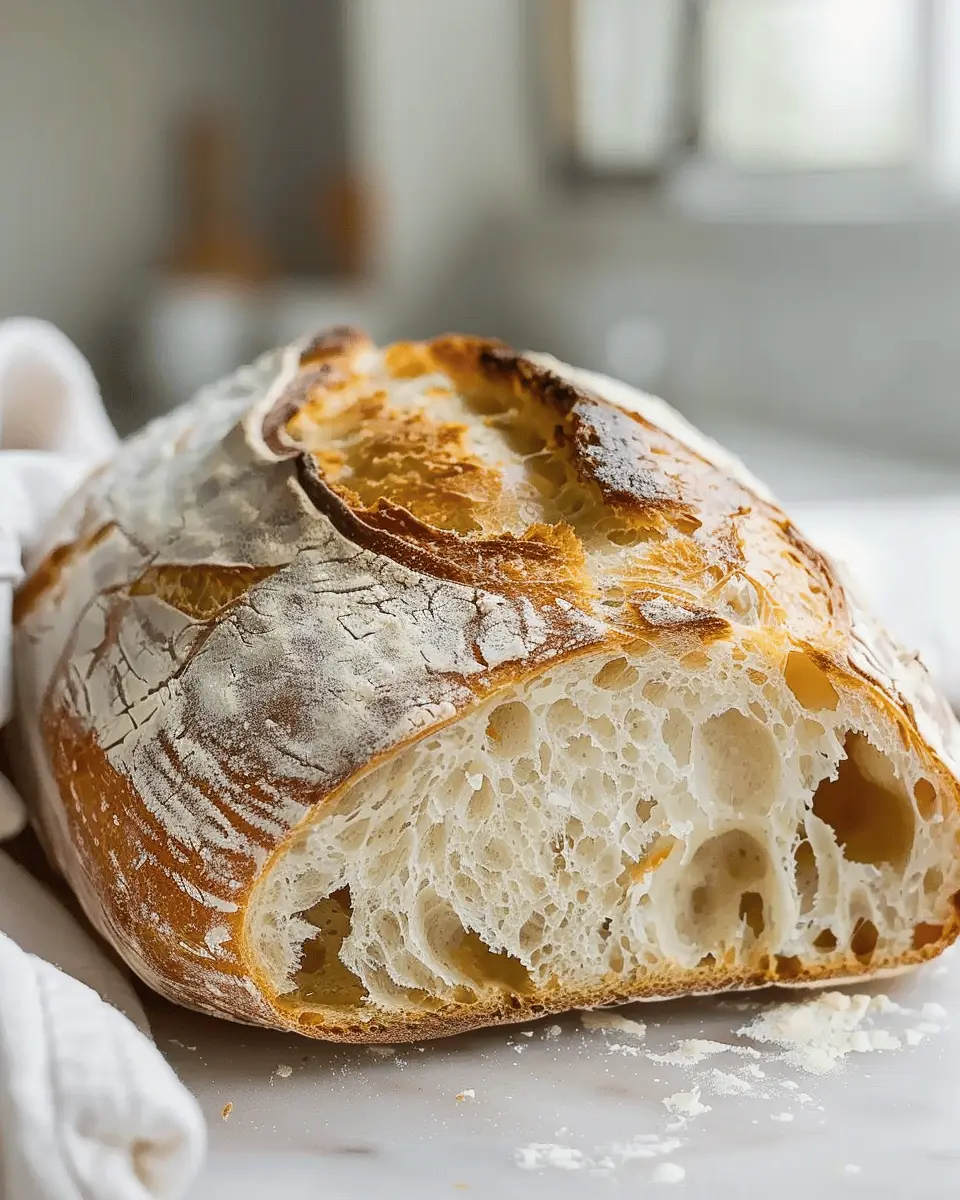Introduction to Crusty Italian Bread
When you imagine the perfect meal, doesn’t the thought of a freshly baked loaf of crusty Italian bread just make your mouth water? The aroma wafting through the kitchen, that golden crust, and the soft, airy inside — it’s hard to resist! But what exactly makes homemade bread worth the effort?
Why Homemade Bread is Worth the Effort
There’s something incredibly satisfying about creating your own food from scratch. The process of mixing, kneading, and waiting for the dough to rise allows you to connect with your meal like never before. According to a survey by the Bread Bakers Guild of America, 70% of bakers report feeling more fulfilled when they bake at home. You aren’t just making bread; you’re crafting a culinary experience!
Here are just a few reasons that might inspire you to roll up your sleeves and dive into the world of bread-making:
-
Healthier Ingredients: When you bake at home, you control what goes into your bread. No preservatives, artificial flavors, or mystery ingredients—just quality flour, water, and yeast. For tips on choosing the best ingredients, check out this guide from the King Arthur Baking Company.
-
Personalized Flavors: Feel free to experiment with fillings like herbs, garlic, or even nuts! Want to make it extra special? Why not try incorporating your favorite spices? The options are limitless!
-
A Labor of Love: Baking bread isn’t just about food; it’s about love, tradition, and memories. Think about it: Who doesn’t have vivid memories tied to the smell of bread baking in the oven? Or that crusty loaf you enjoyed during your last trip to Italy?
Making Custy Italian Bread at home also means you can share it with friends and family. Imagine hosting a dinner party and serving your guests a warm, homemade loaf straight from the oven! It’s the perfect conversation starter.
So, whether you’re a novice baker or a seasoned pro, there’s always something magical about creating bread from scratch. Your kitchen can become your canvas, and the crusty Italian bread you produce will be the masterpiece. Ready to take your culinary skills to the next level? Let’s get started!
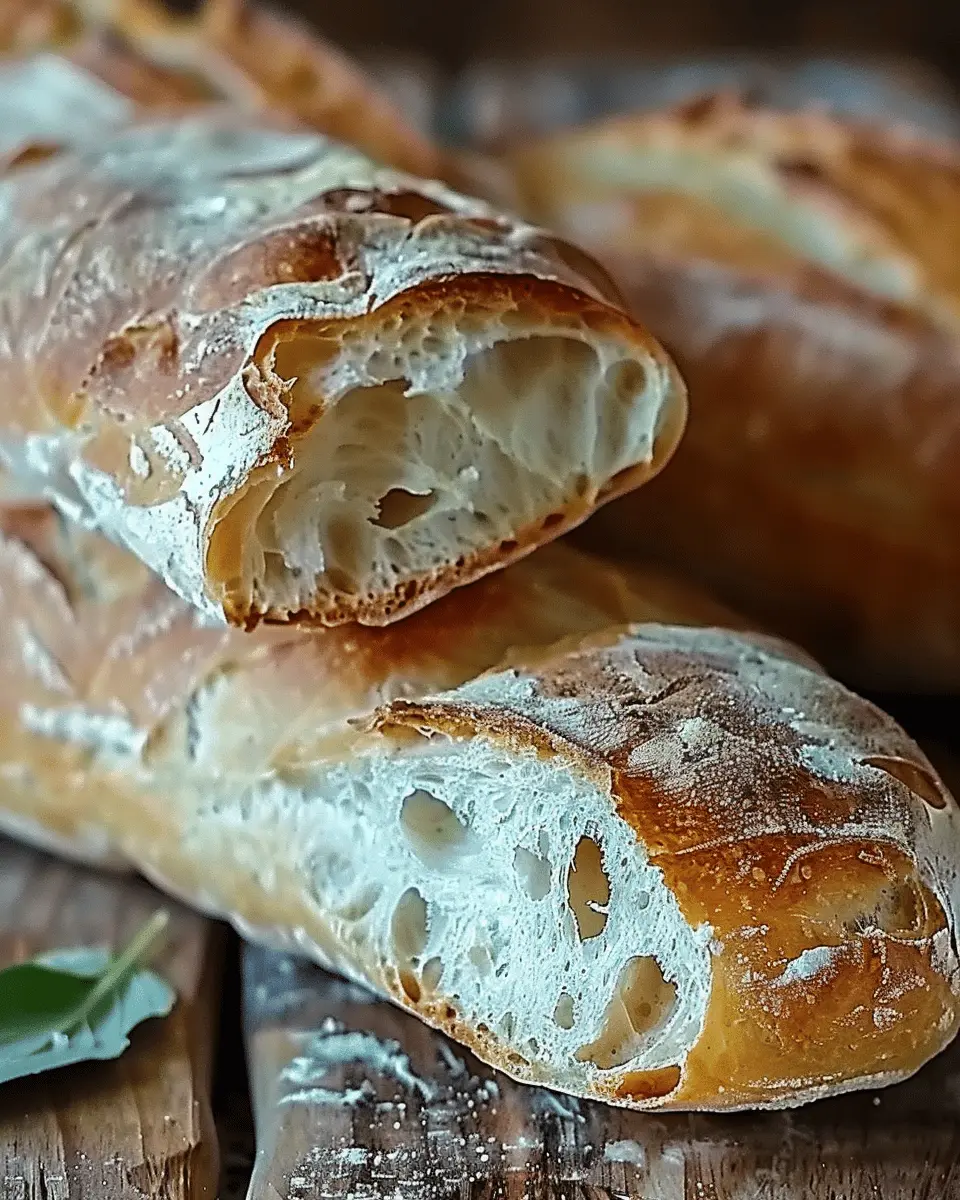
Ingredients for Crusty Italian Bread
If you’re ready to embark on a baking adventure with your Custy Italian Bread, let’s gather our essentials. This recipe calls for straightforward ingredients that come together beautifully to create that satisfying crust and soft, airy inside.
Essential Ingredients:
- Flour: 4 cups of all-purpose flour, for that ideal texture and taste.
- Water: About 1.5 cups, warm and ready to activate the yeast.
- Yeast: 1 packet (or 2.25 teaspoons) of active dry yeast to get those bubbles going.
- Salt: 2 teaspoons, because even bread needs a little seasoning!
- Olive Oil: 2 tablespoons for richness and flavor, opting for a high-quality extra virgin is best.
- Sugar: 1 teaspoon, to help feed the yeast—just a hint to promote browning too.
With these ingredients, you’ll create a loaf that’s undeniably irresistible. If you’re curious about the science behind yeast in baking, check out this fascinating overview from King Arthur Baking.
What sets Custy Italian Bread apart is the perfect balance of simplicity and technique. Each ingredient plays a crucial role, ensuring that your bread emerges with a delightful crust. Ready to get baking?
Preparing Crusty Italian Bread
Making Custy Italian Bread in your own kitchen is not just about the delicious end product; it’s about the joy of creating something from scratch. As you embark on this journey, follow these steps to ensure you get that perfect crusty exterior and soft, airy interior.
Gather Your Ingredients
Before diving into this delightful culinary project, it’s crucial to gather all of your ingredients. This not only makes the process seamless but also enhances your cooking experience. For this recipe, you’ll need:
- 3 ½ cups all-purpose flour
- 1 ½ cups warm water (about 110°F)
- 2 teaspoons salt
- 2 teaspoons sugar
- 2 ¼ teaspoons active dry yeast
- A sprinkle of flour for your work surface
Activate the Yeast
Starting with fresh yeast is vital for a successful rise. In a small bowl, mix the warm water, sugar, and yeast. Stir gently and let it sit for about 5 to 10 minutes until it becomes frothy. This step is essential because it confirms that your yeast is alive and kicking. If it doesn’t froth, don’t worry—just grab some new yeast and start again!
Mix the Dough
Once your yeast is activated, mix it with the flour and salt in a large bowl. A wooden spoon works well here. You’re looking to create a shaggy dough that holds together. Is it a bit sticky? That’s just what you want. If you’re up for it, you could also explore using a stand mixer with a dough hook for this step.
Knead Until Smooth
Now it’s time to get your hands in there! Flour your work surface and dump your dough out. Knead it for about 8-10 minutes until it is smooth and elastic. This is a good opportunity to think about all the delicious ways you can enjoy your bread once it’s baked!
First Rise – Let It Double
After kneading, place your dough in a lightly oiled bowl and cover it with a kitchen towel or plastic wrap. Now, patience is key—let it rise in a warm spot until it’s doubled in size, which usually takes about 1 to 2 hours. This is where the magic happens, as the yeast does its work.
Shape the Dough
Once your dough has risen, punch it down gently to release any air bubbles. Transfer it to a lightly floured surface and shape it into a round loaf or an oval shape, depending on your preference. Be careful not to overwork the dough again; you want to maintain that airy texture.
Second Rise – Let It Rest
Now, transfer your shaped dough to a parchment-lined baking sheet. Cover it again with a towel and let it rise for another 30 to 60 minutes. This step helps create that airy crumb structure we all love in Custy Italian Bread.
Preheat the Oven and Prepare for Baking
While your dough is rising, preheat your oven to 450°F (232°C). For an added touch of crustiness, you can place a shallow pan filled with water on the bottom rack. This steam will help develop a nice crust while baking.
Score the Loaf for a Perfect Crust
With a sharp knife or razor blade, score the top of your loaf with a few diagonal cuts. This is not just for decoration; it also allows steam to escape during baking and helps achieve that beautiful crust.
Bake and Observe the Magic
Finally, it’s time to bake your bread! Place it in the oven and let it bake for 25-30 minutes, or until it’s golden brown and sounds hollow when tapped on the bottom. The aroma will fill your kitchen, and you’ll know you’ve created something special. Don’t forget to allow your bread to cool on a wire rack before slicing. Enjoy your Custy Italian Bread with a bit of olive oil or as the perfect companion to your favorite meal!
There you have it! A straightforward yet rewarding process for making crusty Italian bread that will elevate your home-cooking game. So roll up your sleeves and start baking!
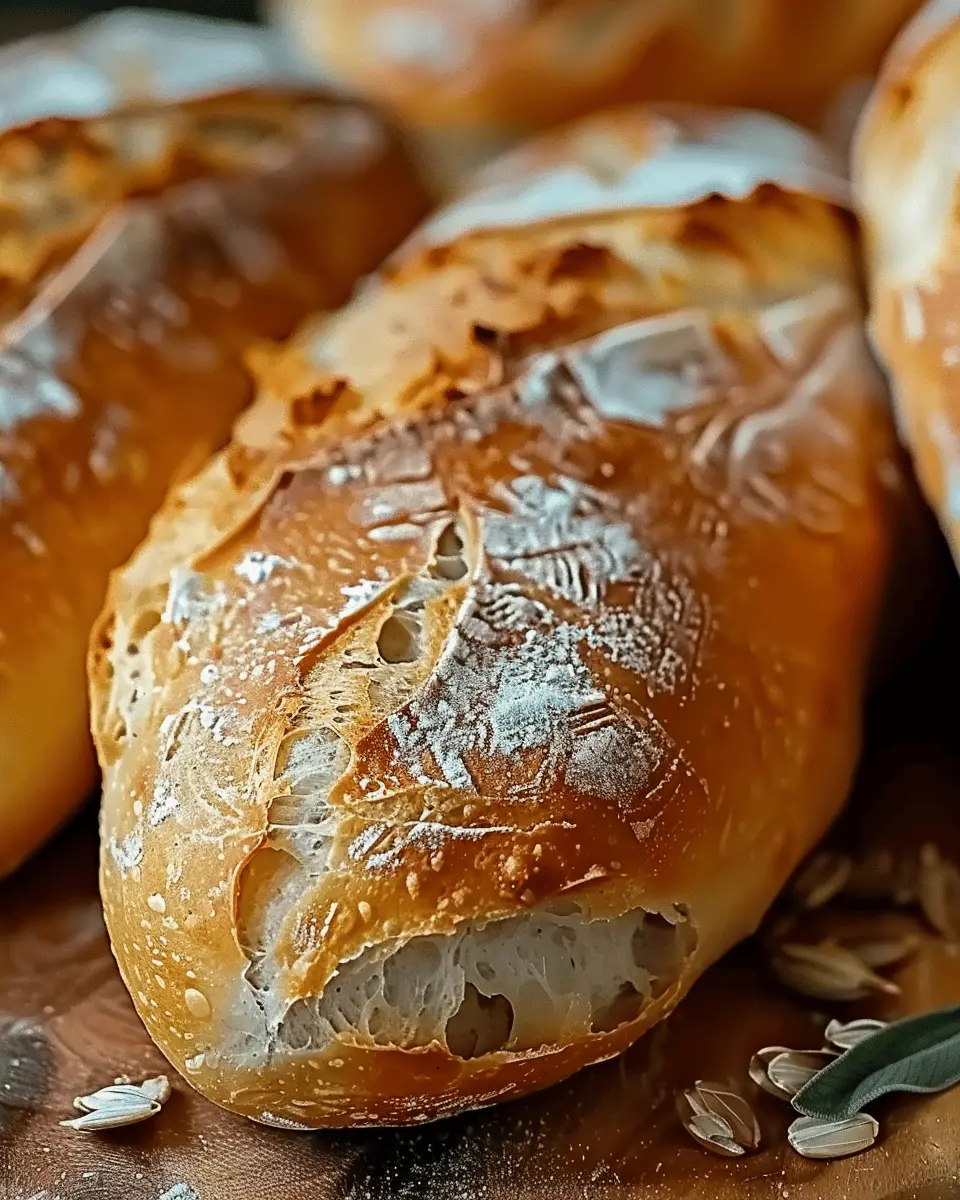
Variations on Crusty Italian Bread
Adding Herbs for Extra Flavor
One of the simplest ways to elevate your Custy Italian Bread is by incorporating fresh or dried herbs into the dough. Imagine slicing into a loaf infused with fragrant rosemary or zesty oregano. But how do you do it?
- Start Small: Add about 1-2 tablespoons of your herb of choice. Fresh herbs will give you a more pronounced flavor, while dried herbs will infuse gradually with each rise.
- Mix and Match: You can experiment with combinations. Basil, thyme, and even garlic powder can create a delightful symphony of flavors, perfect for accompanying soups or dipping in olive oil.
Herbs not only enhance the taste but also add nutritional benefits. According to the Harvard Health Publishing, many herbs boast antioxidants and essential vitamins, making your bread not just delicious but more healthful too.
Experimenting with Different Shapes
Another fun way to personalize your Custy Italian Bread is by shaping it into different forms! Have you ever considered why bread is traditionally round or oval? Changing the shape can be an exciting twist for your mealtime.
- Dinner Rolls: Shape your dough into smaller, round rolls. They’re perfect for sharing at dinner.
- Braided Loaves: If you’re feeling adventurous, try braiding your dough. Not only does it look stunning, but it also creates a lovely texture.
- Sticks or Baguettes: For a more casual style, form long, thin loaves. These are fantastic for making sandwiches or serving with dips.
Discovering new shapes can be a fun group activity too! Picture an evening of baking with friends, each creating their unique version of Custy Italian Bread.
By experimenting with herbs and shapes, you can turn your bread-baking experience into a culinary adventure. Who knows? You may just find your new favorite loaf style!
Baking Notes for Crusty Italian Bread
Tips for Achieving the Perfect Crust
Creating that crusty Italian bread you’ve always dreamed of requires a few key tricks. First, use high-quality flour that has a higher protein content to develop gluten, which contributes to structure. Don’t rush the shaping process—let your dough rest adequately; this helps the gluten relax. For an extra crispy crust, consider placing a metal pan filled with water in the oven during baking. The steam keeps the crust from forming too quickly, allowing it to expand and create that delightful crunch.
Importance of Baking Temperature
The baking temperature plays a pivotal role in crafting the ideal loaf. Aim for a hot oven, around 450°F (232°C) for baking crusty Italian bread. This high heat encourages puffiness and a beautifully golden crust. Preheating your baking vessel, whether it’s a Dutch oven or a baking stone, ensures even heat distribution. Want to elevate your pizza game too? Check out Serious Eats for more on perfecting your crust!
Happy baking! With these tips in hand, you’re well on your way to enjoying that perfect slice of crusty goodness!

Serving Suggestions for Crusty Italian Bread
Perfect Pairings for Your Bread
When it comes to Custy Italian Bread, the possibilities are endless! This crusty delight pairs beautifully with a variety of toppings. Consider slathering on some creamy butter or herb-infused olive oil for that classic Italian experience.
For something a bit heartier, top slices with turkey bacon, fresh avocado, and a sprinkle of salt and pepper. You can also layer on some chicken ham with a slice of your favorite cheese for a delicious sandwich. If you’re feeling adventurous, why not try it with a fresh tomato and basil bruschetta? The acidity from the tomatoes cuts perfectly through the bread’s richness.
Creative Ways to Enjoy Leftovers
No one likes food waste, so let’s talk about what to do with your leftover Custy Italian Bread.
- Bread Crumbs: Simply blitz the leftover bread in a food processor to make your own bread crumbs for future recipes.
- Croutons: Cube the bread and toss it with olive oil, herbs, and a pinch of salt before baking until golden brown.
- French Toast: Dip slices in an egg mixture, then grill to create a delightful breakfast treat.
Each of these methods not only revitalizes your bread but also allows you to enjoy the flavors for days to come! For more inspiration, check out sites like Eat This, Not That for tips on creative leftover ideas.
Time Breakdown for Crusty Italian Bread
Preparation Time
Making Custy Italian Bread begins with preparing the dough, which typically takes about 15 to 20 minutes. This is where you’ll combine your flour, water, yeast, and salt. The joy of kneading is a therapeutic process for many—take your time to enjoy it!
Rising Time
Once mixed, allow the dough to rise in a warm place. This stage can take around 1 to 2 hours. You’ll want to see the dough double in size, which is essential for developing that beautiful, airy texture. Pro tip: try covering it with a damp cloth to keep it warm and moist.
Baking Time
Finally, the baking stage usually requires about 25 to 30 minutes in a preheated oven. The enticing aroma filling your kitchen is a reward in itself! For optimal crustiness, consider placing a pan of water in the oven during baking; it creates steam that enhances the crust.
To dive deeper into the science of bread-making, check out resources from King Arthur Baking. Happy baking!
Nutritional Facts for Crusty Italian Bread
Calories Per Slice
When it comes to enjoying Custy Italian Bread, you might wonder how it fits into your dietary goals. A typical slice has approximately 80-100 calories, making it a moderate choice for your meals or snacks. Just remember, the tempting crusty exterior is as delicious as it is calorie-dense!
Nutritional Components Overview
Let’s break down what’s going into that lovely loaf:
- Carbohydrates: Generally, a slice contains around 15-20 grams of carbohydrates, providing a quick energy boost.
- Protein: With about 2-3 grams per slice, it’s not a significant source but pairs well with a protein like Turkey Bacon for breakfast or a sandwich.
- Fats: Minimal fat content usually, under 1 gram unless you smear on some butter or olive oil.
Moreover, Custy Italian Bread can be a source of essential vitamins and minerals, including B vitamins and iron. For comprehensive dietary choices, consider serving it with fresh vegetables or dips for a nutritious boost. For those interested in more detailed nutritional information, the USDA’s FoodData Central is a great resource you can check out. Adapting bread into your meals creatively can lead to fulfilling and balanced diet options.
Have you considered how crusty bread can elevate a simple soup or salad? Just imagine the delightful crunch paired with soothing textures!
FAQs about Crusty Italian Bread
Why is my bread not crusty?
If you’ve followed the recipe for your custy Italian bread but find it lacking that desired crusty exterior, a few factors could be at play.
- Humidity: Baking in a humid environment can affect how crusty your bread turns out. Lower humidity helps achieve that golden crust.
- Oven Temperature: Make sure your oven is properly preheated. A higher initial temperature can create a better crust. Aim for at least 450°F (232°C) at the start.
- Steam: Introducing steam into your oven while your bread bakes can enhance crustiness. A simple trick is to place a pan of hot water at the bottom on the oven during baking.
Can I freeze crusty Italian bread?
Absolutely! Freezing is a great way to preserve your custy Italian bread. Just allow it to cool completely, slice if desired, and wrap it tightly in plastic wrap or aluminum foil. Then, place it in a freezer-safe bag. Bread can last up to three months in the freezer. When you’re ready to enjoy it, simply thaw at room temperature or pop slices in the toaster for a quick revival of that crusty appeal.
How do I store leftover bread?
To keep your custy Italian bread fresh, you have a few options:
- Room Temperature: Store it in a paper bag or a bread box to maintain its crust.
- Refrigeration: This isn’t recommended as it can make the bread stale faster.
- Long-term Storage: If it’s not going to be consumed soon, opt for freezing as mentioned above.
For more baking tips, check out The Perfect Loaf for excellent insights on bread-making and storage. Remember, the key is to enjoy your bread while it’s fresh!
Conclusion on Crusty Italian Bread
In conclusion, making Custy Italian Bread at home can be a rewarding experience that elevates your meals. With its crispy crust and soft, airy interior, this bread is perfect for sandwiches, to accompany soups, or to enjoy with your favorite spreads. You don’t need professional baking equipment or a vast knowledge of culinary techniques—just a little patience and practice.
This delightful bread pairs wonderfully with various ingredients, including roasted turkey bacon or chicken ham, making it versatile for any meal. So why not gather your ingredients, roll up your sleeves, and embrace the joy of homemade bread? You won’t regret it! For more tips on baking, check out The Kitchn for expert insights. Happy baking!
PrintCusty Italian Bread: The Best Homemade Loaf for Food Lovers
A delectable homemade Italian bread that is perfect for food lovers, offering a crispy crust and soft, airy interior.
- Prep Time: 10 minutes
- Cook Time: 30 minutes
- Total Time: 2 hours 40 minutes
- Yield: 1 loaf 1x
- Category: Bread
- Method: Baking
- Cuisine: Italian
- Diet: Vegetarian
Ingredients
- 4 cups all-purpose flour
- 1 tablespoon salt
- 1 tablespoon sugar
- 2 teaspoons instant yeast
- 1 ½ cups warm water
Instructions
- In a large bowl, combine flour, salt, sugar, and yeast.
- Add warm water and stir until a sticky dough forms.
- Cover and let the dough rise for 1-2 hours until doubled in size.
- Shape the dough into a loaf and place it in a baking pan.
- Preheat the oven to 450°F (232°C).
- Let the dough rise again for about 30 minutes.
- Bake for 25-30 minutes until golden brown.
Notes
- For a richer flavor, allow the dough to rise overnight in the refrigerator.
Nutrition
- Serving Size: 1 slice
- Calories: 150
- Sugar: 1g
- Sodium: 300mg
- Fat: 1g
- Saturated Fat: 0g
- Unsaturated Fat: 0g
- Trans Fat: 0g
- Carbohydrates: 30g
- Fiber: 1g
- Protein: 5g
- Cholesterol: 0mg
Keywords: Custy Italian Bread, homemade bread, food lovers



